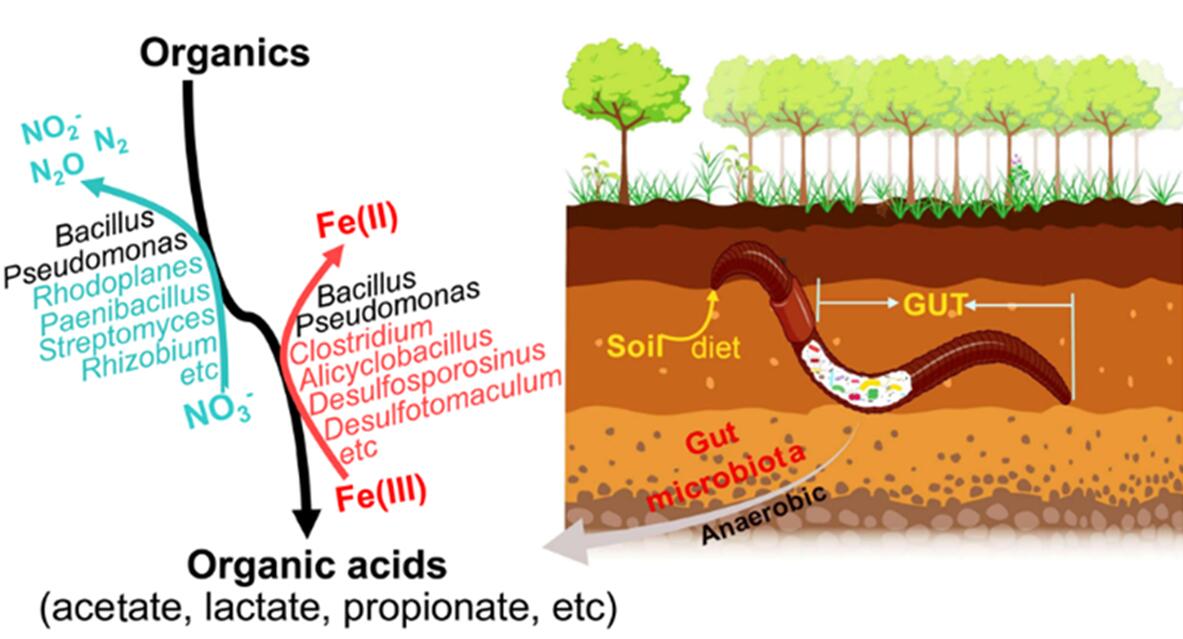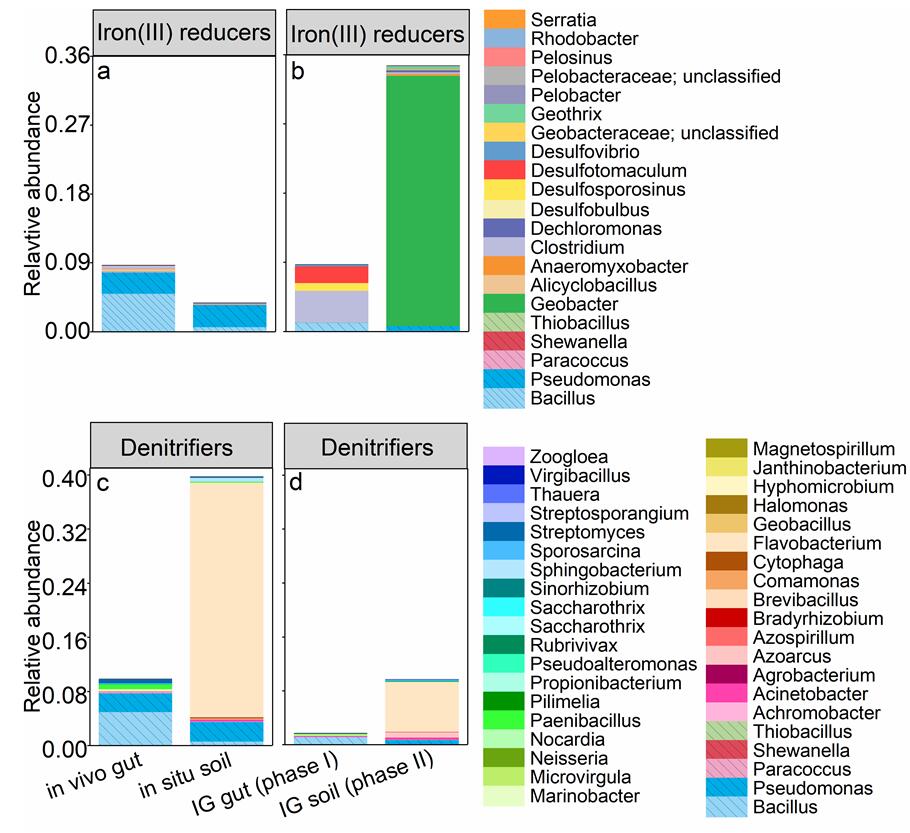Earthworms function as soil ecosystem engineers, as they can impact the structure and fertility of soils through their feeding and burrowing activities. Earthworms are a major soil macrofaunal group and population sizes can reach numbers of 2000 individuals per square meter of soil, thus they make important contribution to carbon stabilization, mineralization and nitrogen turnover. Iron, which is the fourth most abundant element on earth, can be ingested by these soil animals. Due to the feeding behavior, the diet of soil-feeding earthworms consists of a large number of minerals. The earthworm gut provides an ideal habitat for ingested iron(III)-reducing microorganisms. However, whether the occurrence of iron(III) reduction is prevalent in the gut of soil-feeding animals remains unclear.
The research group led by Prof. Yong-Guan Zhu demonstrated the occurrence of iron(III) reduction in the gut of earthworm and intestinal iron(III) reducers were dominated by fermentative microbes, and fermentative iron(III)-reducing microorganisms shared several genera with denitrifiers among gut microbiota of earthworm. Samples from gut contents combined with anoxic incubation were used for chemical analysis and 16S rRNA based Illumina sequencing. Chemical analysis showed that higher ratios of iron(II)/iron(III), nitrite/nitrate and more abundant organic acids contained in the in vivo gut of earthworm P. guillelmi than those in the in situ soil. Higher rate of iron(III) reduction was detected in treatments of microcosmic incubation with gut contents (IG gut) than that with soil (IG soil), and nitrate reduction occurred earlier than iron(III) reduction in both treatments. Potential iron(III) reducers dominated by fermentative genera Clostridium, Bacillus and Desulfotomaculum in the treatment of IG gut while dominated by dissimilatory iron(III)-reducing genera Geobacter in the treatment of IG soil. Iron(III)-reducing microbial community shared several genera with denitrifers in the treatment of IG gut, revealing a close link between iron(III) reduction and denitrification in the gut of earthworm. Collectively, our findings demonstrated that iron(III) reduction occurred along the gut and provided novel insights into the great contribution of earthworm gut microbiota on Fe and the associated C and N cycling in soil environments.
This study has been published in the journal of “Environmental Science & Technology” entitled " Mobile Incubator for Iron(III) Reduction in the Gut of the Soil-Feeding Earthworm Pheretima guillelmi and Interaction with Denitrification" with Dr. Zhou Guowei as the first author on March 18, 2019 (Author list: Guo-Wei Zhou, Xiao-Ru Yang*, An-Qi Sun, Hu-Li, Simon Bo Lassen, Bang-Xiao Zheng, Yong-Guan Zhu ).
This work was supported by the National Natural Science Foundation of China (41430858 and 41771285) and the Strategic Priority Research Program of Chinese Academy of Sciences (XDB15020302 and XDB15020402).

The diagram of iron(III) reduction and its interaction with denitrification in the gut of earthworm Pheretima guillelmi

Figure 1. Iron(III) reducers and denitrifiers in the gut of earthworm.